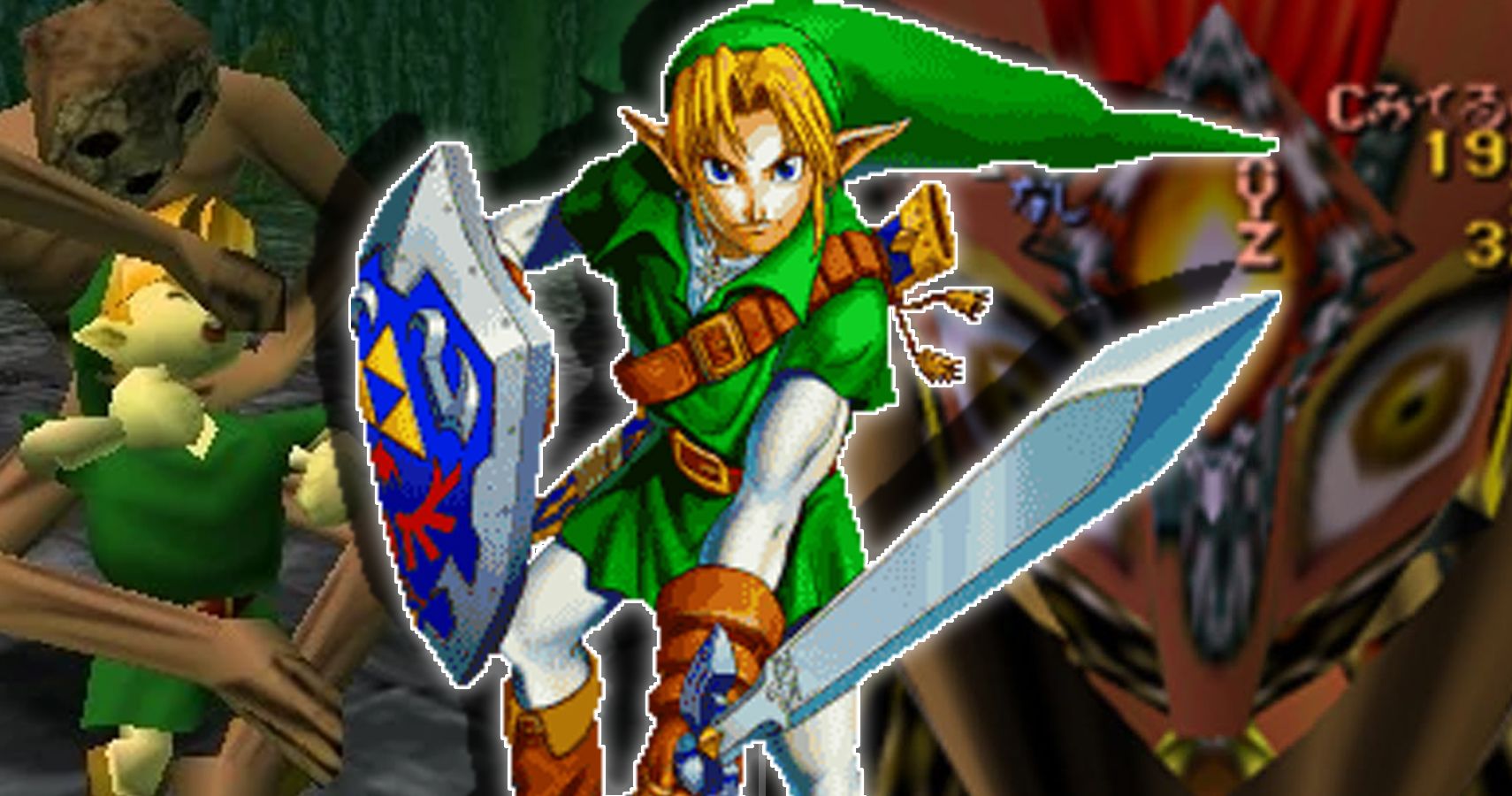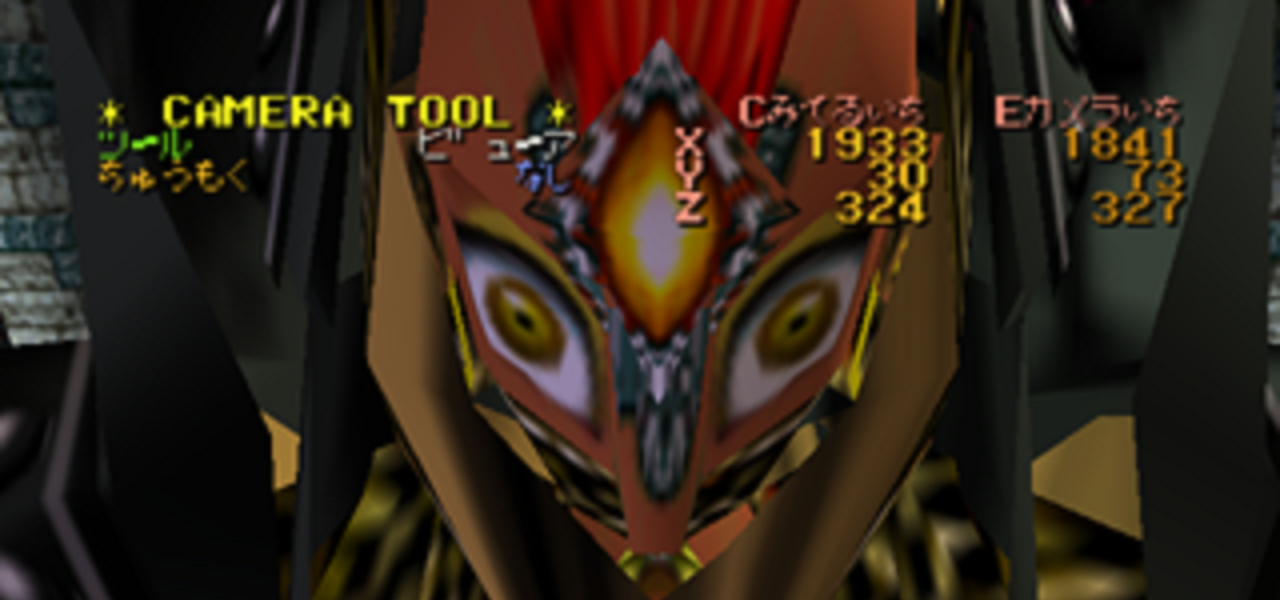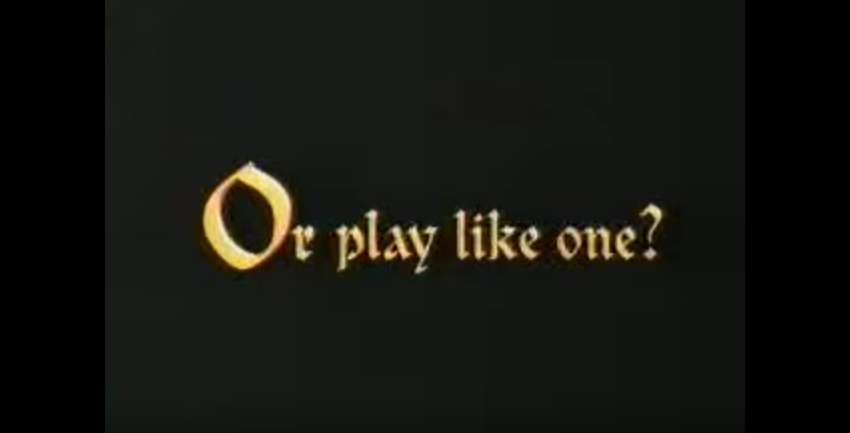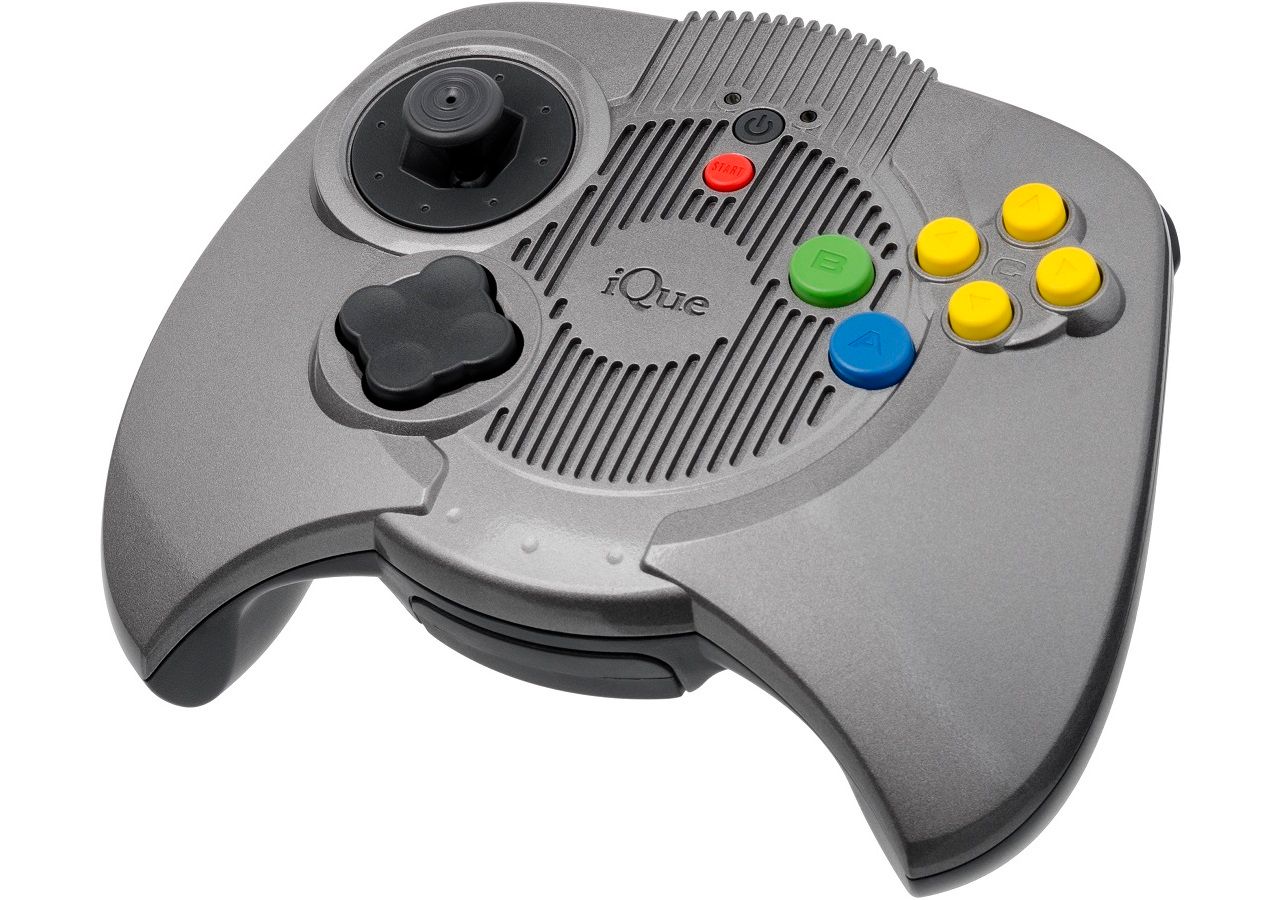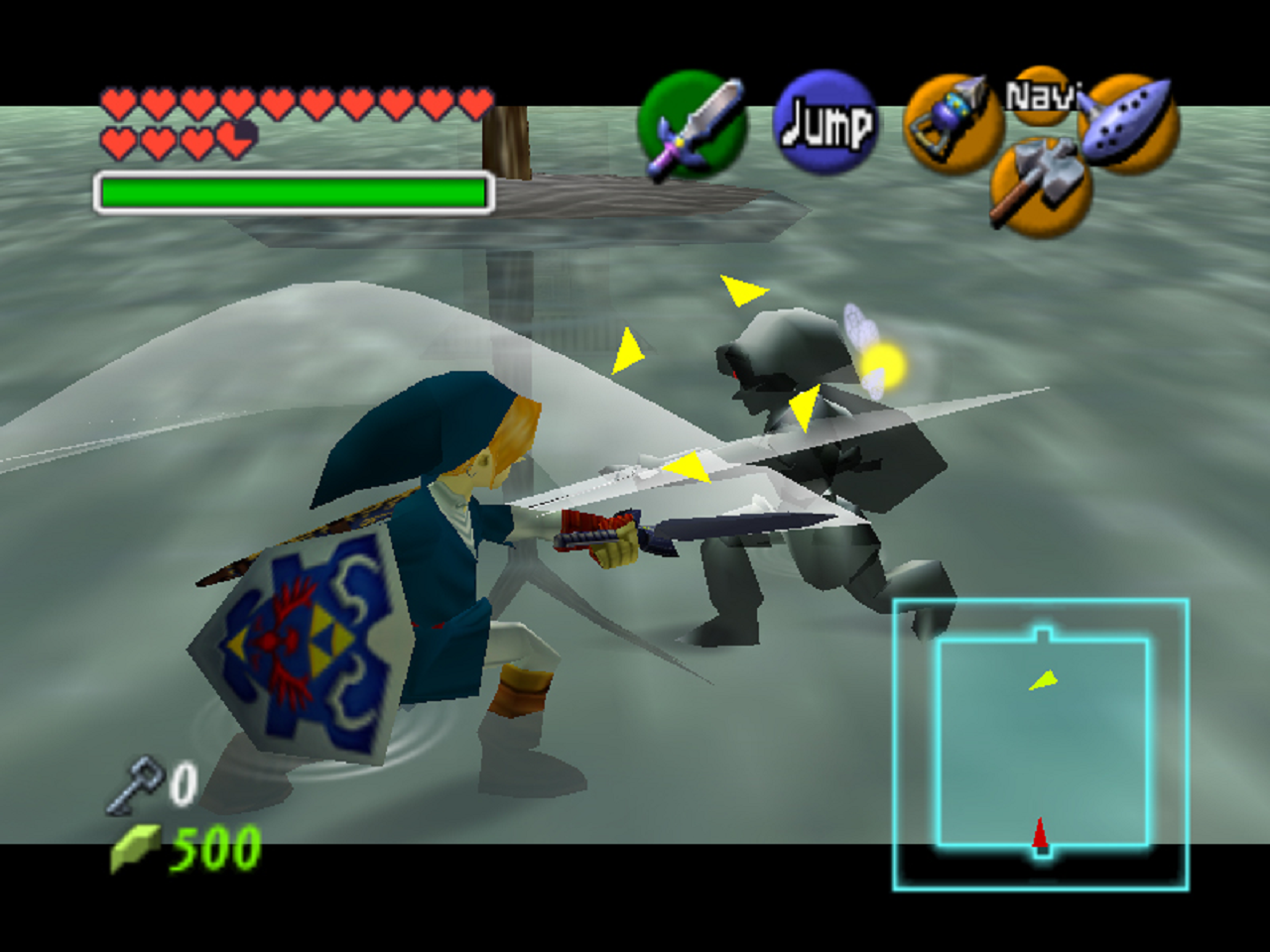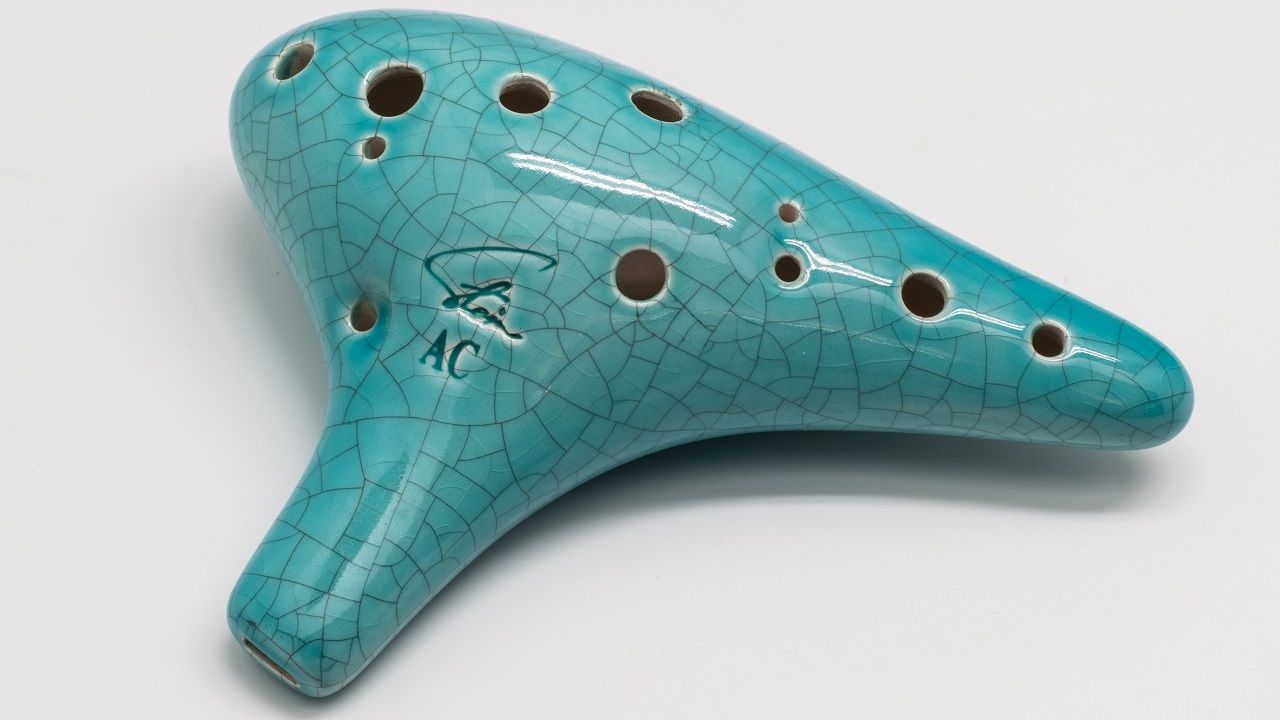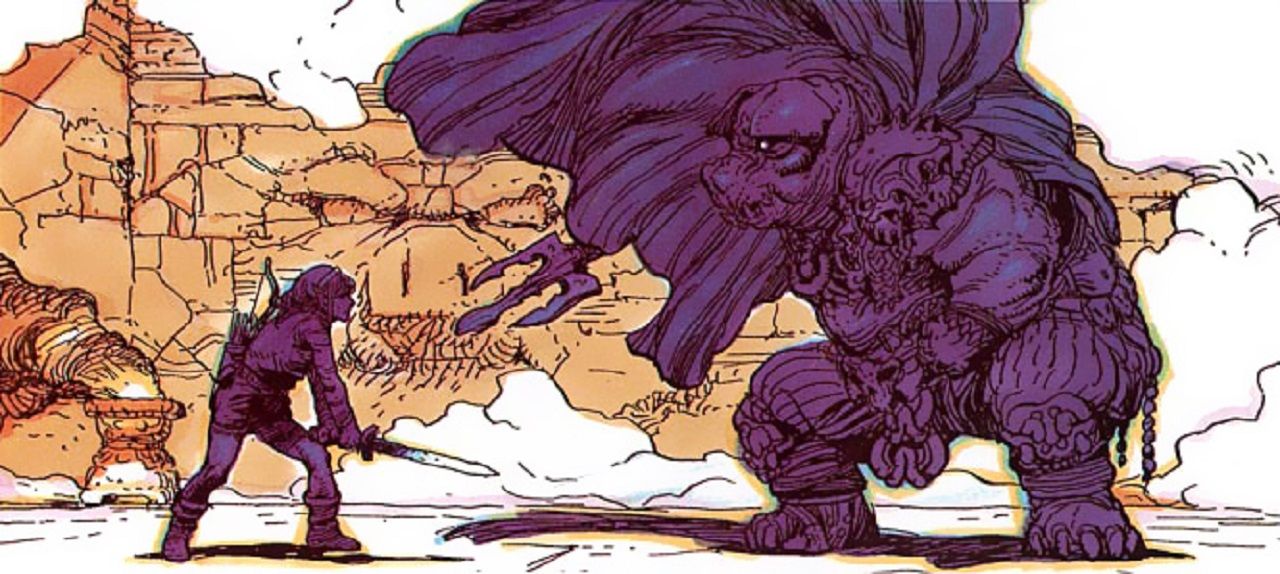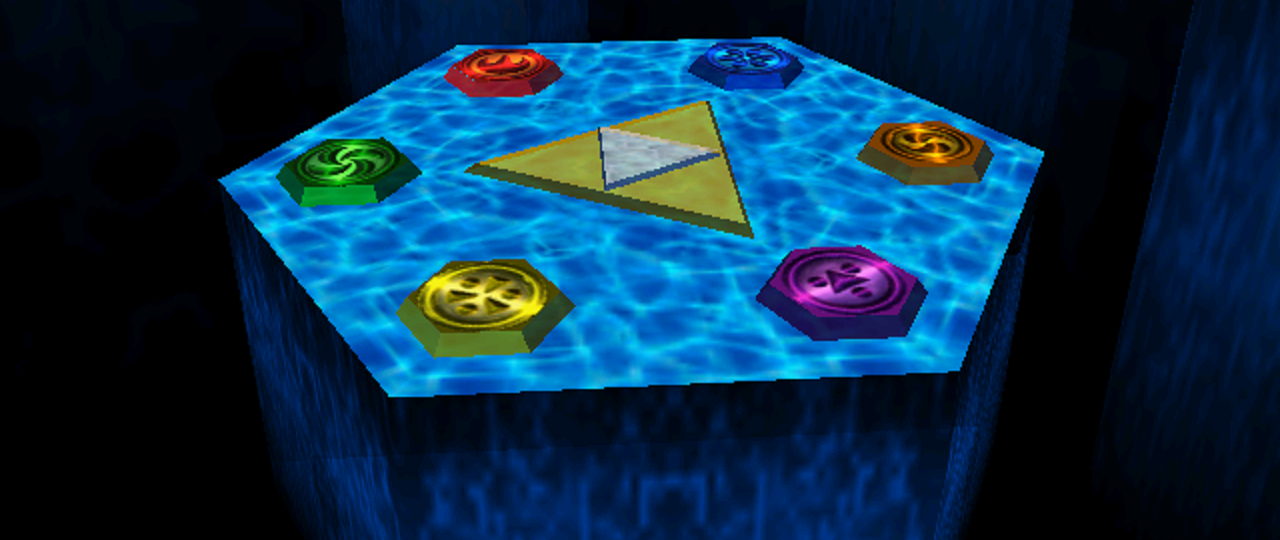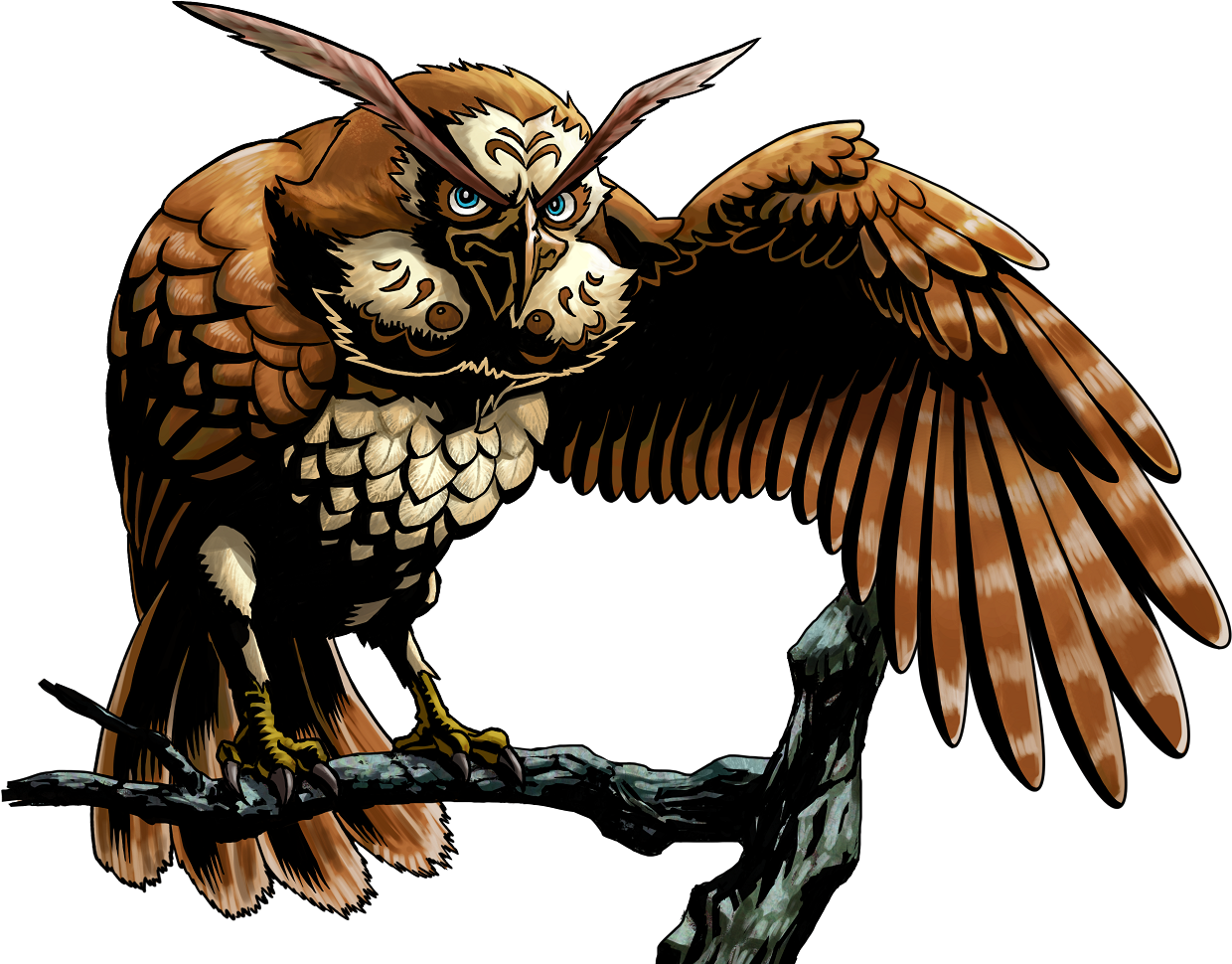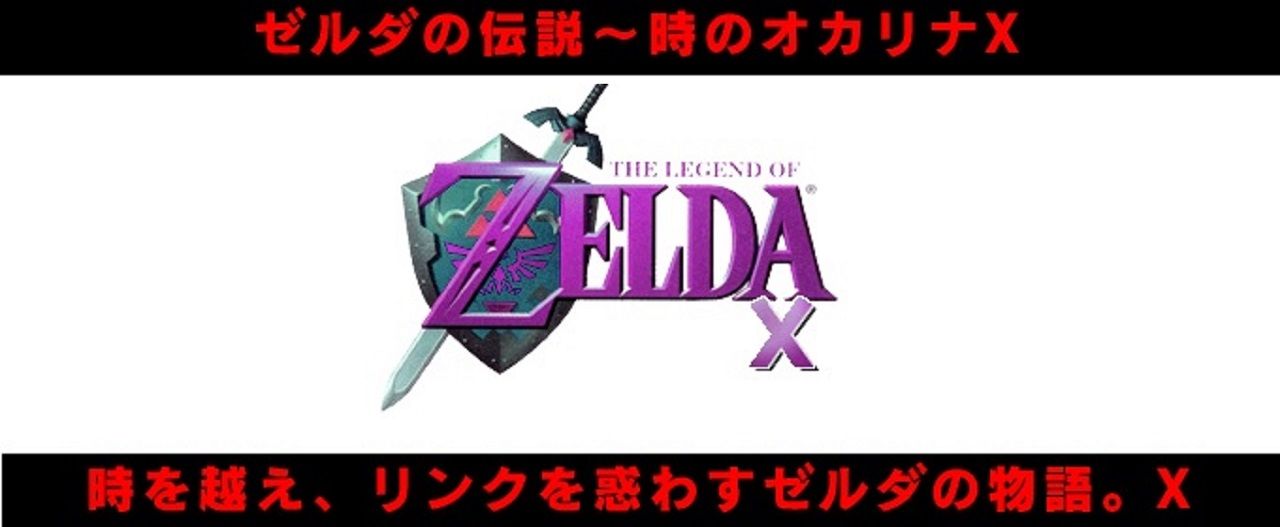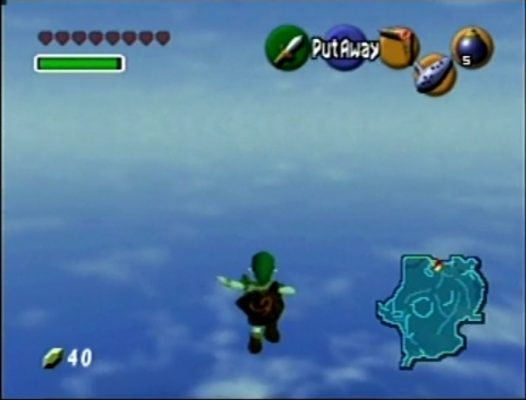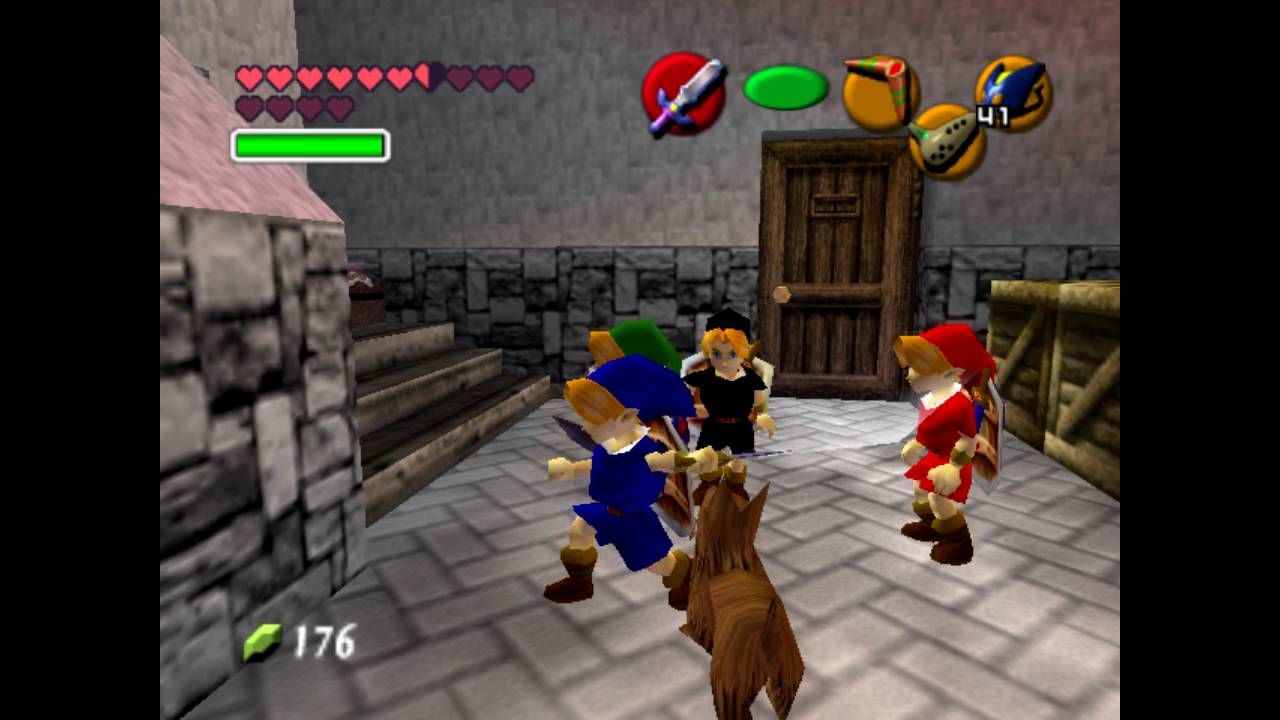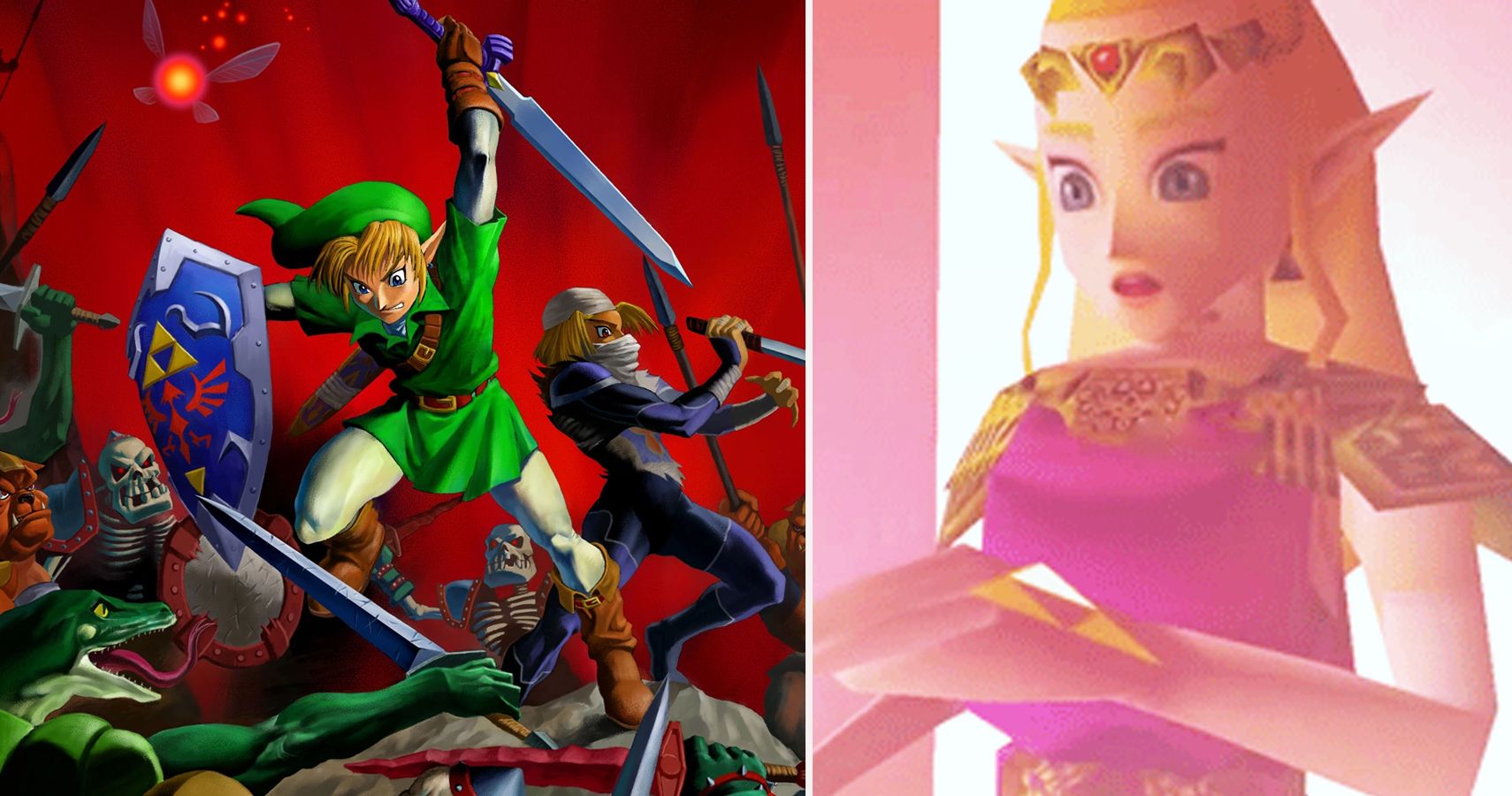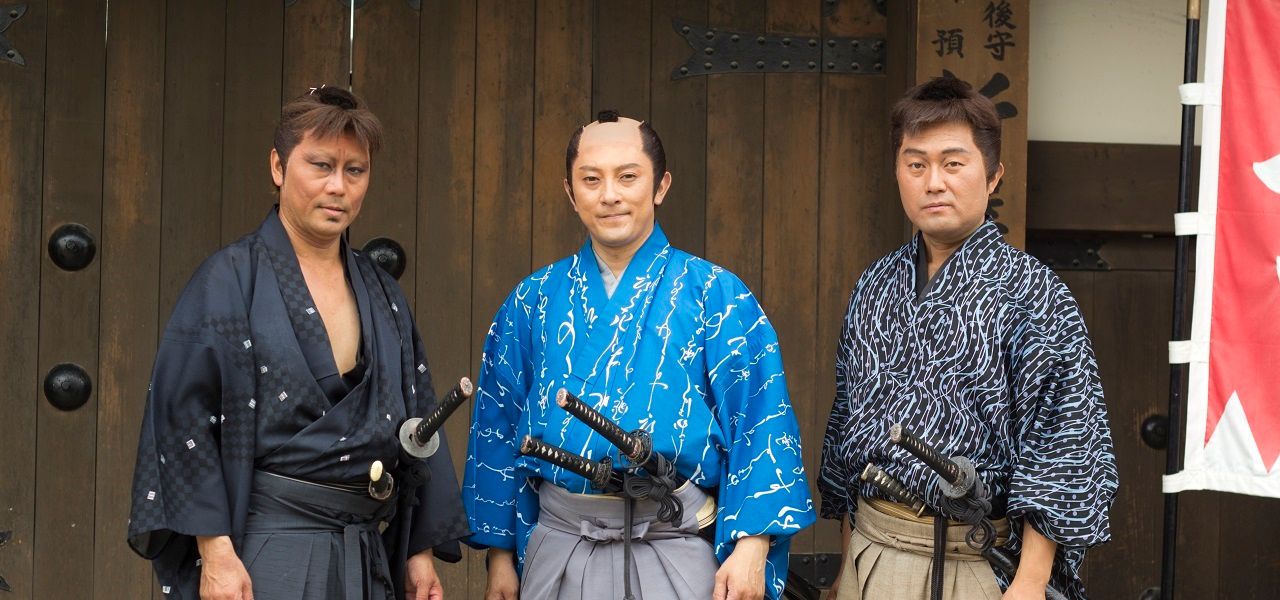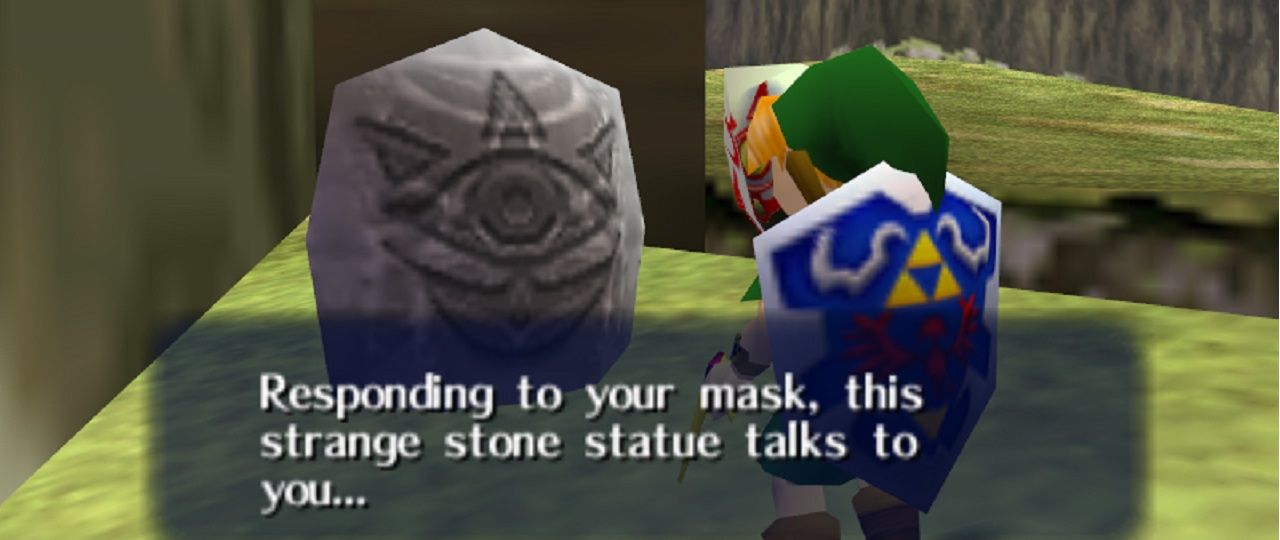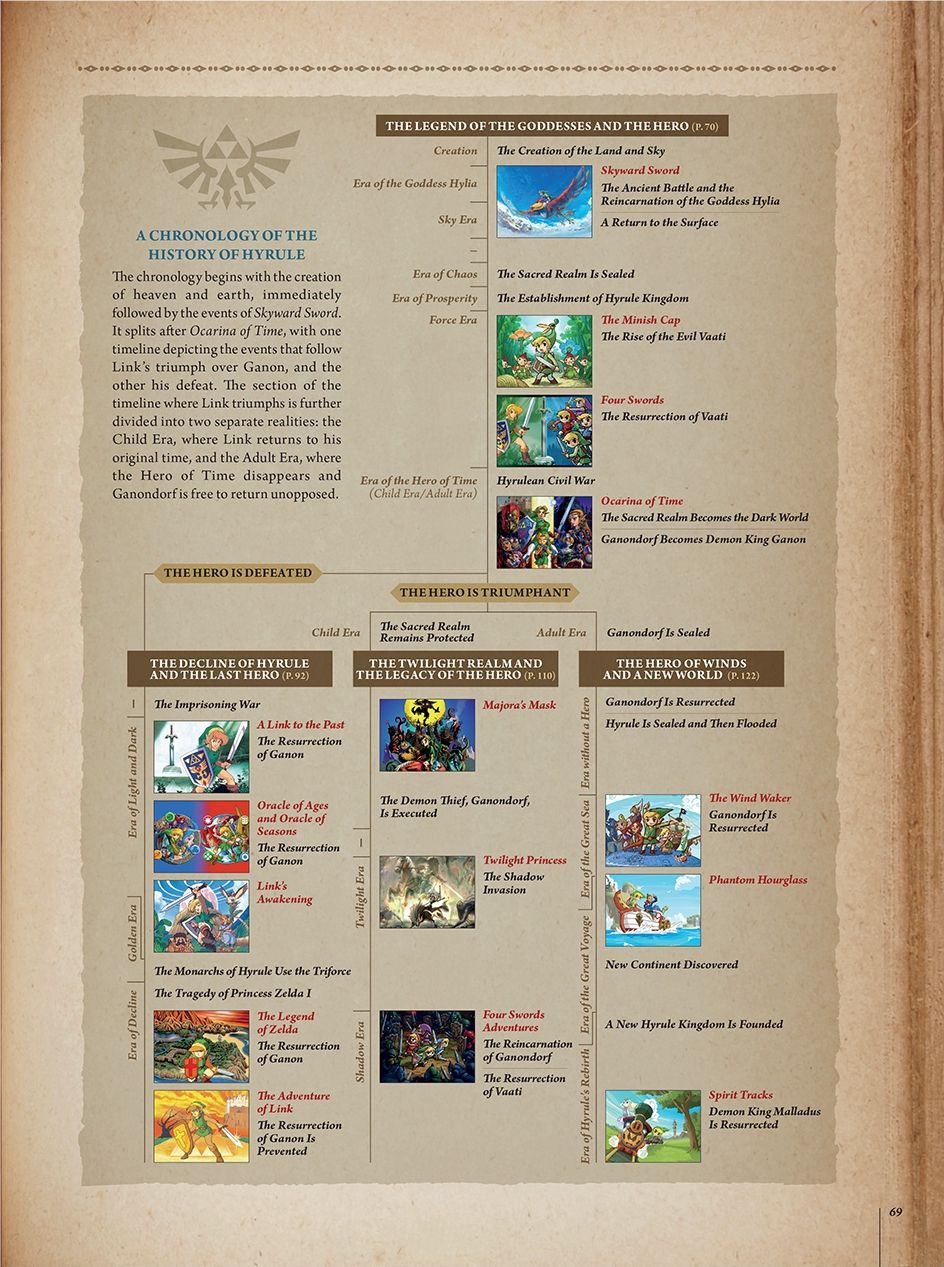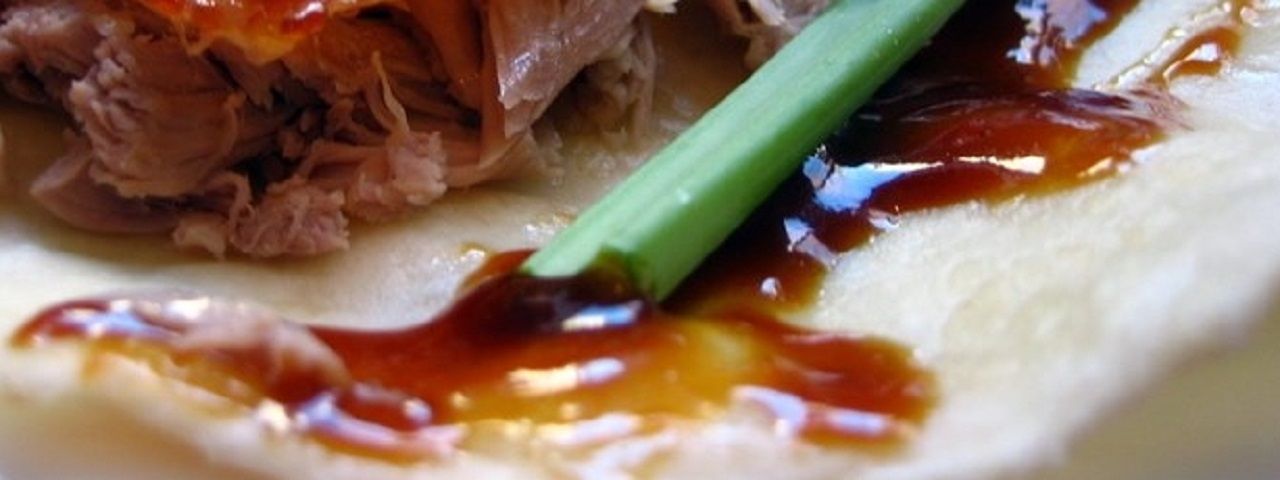The Legend of Zelda: Ocarina of Time is the fifth installment of The Legend of Zelda series. It marked the series' first transition to 3D, launching the franchise to new heights and acting as a high-watermark for action games, adventure games, and open-world games for more than a decade. But you probably already knew that, because The Legend of Zelda: Ocarina of Time is one of the most beloved video games ever made, from a franchise that was already adored at the time.
Ocarina of Time is one of the most popular video games of all time. Its cultural legacy spanned multiple console generations, almost every artistic medium there is, and introduced a lot of gameplay mechanics that became instant industry standards. These include: in-engine cutscenes, lock-on targeting in action games, and a few clever rendering and programming tricks here and there. It's possibly one of the most important 3d games ever made... but how much do you really know about it?
Unsurprisingly, this revolutionary game has a lot of secrets and behind-the-scenes secrets that fans of The Legend of Zelda should definitely know. It's a treasure trove of industry secrets and Nintendo development secrets. Diving into this list, fans of the franchise are going to learn the darkest secrets about one of the greatest video games ever made.
20 Ocarina Of Time Was Almost A CD-Based Game
Many people mistakenly remember Legend of Zelda: Ocarina of Time as a launch title. After all, what is a Nintendo console without a Zelda game? That's one of the most commonly levied complaints against Nintendo—that their newest console lacks a mainline Zelda release. Well, it's been a bad habit for decades — until last year, of course.
Ocarina of Time was originally going to be developed for the N64 Disk Drive, or 64DD for short. However, because of the lack of real killer apps on the console (other than Star Fox, Super Mario 64, GoldenEye 007, etc...) compounded with the uncertainty of the 64DD even coming to be, it became clear that it might be a bad idea to go so long without a mainline Zelda release.
19 Iron Knuckles Are All Gerudo
Savvy players probably have some emotional memories of Iron Knuckles. They're big, heavy enemies that do a lot of burst damage, but with attacks that can be evaded easily with good timing. Very Dark Souls-esque, really.
With the same careful camera manipulation, you can get the camera to clip through their great-helm, revealing the face of a generic Gerudo instead!
In the Spirit Temple, Link fights a brainwashed Nabooru wearing the armor of an Iron Knuckle as a mini-boss. Revealing that it's really Nabooru in there isn't a clever camera trick and model swap; that particular Iron Knuckle actually does use a unique model, and succeeding in clipping the camera through its head will reveal Nabooru's face and clothes under its great-helm and armor.
18 Link Is Actually Just Leonardo DiCaprio
Link underwent a pretty big character design shift in the jump between 2d and 3d.
The Legend of Zelda: Art and Artifacts has an interview with a trio of Nintendo artists that shed light on Link's new look in The Legend of Zelda: Ocarina of Time:
"Yeah. At that time, if you were to talk about a really good-looking actor, people immediately thought of this guy. So I recall keeping in mind the point of his nose and that strong-willed look in his eyes when I was drawing."
It could be one of a few actors of the era, but it's most likely that they mean Leonardo DiCaprio. The hair is spot-on for his earlier heartthrob roles, they share a more rounded sort of face, and Japan took a special liking to 1996's rather bizarre adaptation of Romeo & Juliet.
17 The Upsetting Comments About Girls
It's easy to get lost in the drama of this or that new release having overtly bigoted content, and to think that it's a very recent phenomenon. But it's been a thing for a long time. Check it out here.
Nintendo of America very, very briefly ran this ad, unaware that a certain portion of the population —about half of it— might take offense to the phrase "Will you get the girl, or play like one?" It was quickly replaced with the slightly more inclusive line "Willst thou soar, or willst thou suck?"
It's great that they removed the offensive text, but it should have been plainly obvious (even in 1998), that people of all walks of life enjoy games... Espcially, Nintendo games. Geez.
16 It Had Some Weird Anti-Piracy Measures For The Far East
China, unfortunately, never got the N64. Due to rampant software piracy in the region (Oh, and import restrictions, but when have those ever mattered?), Nintendo partnered up with one Chinese-American scientist Wei Yen to develop and release the iQue Player, also known as the Shén Yóu Ji, or "Diving Gaming Machine," in 2003.
Instead of cartridges or discs, it used a very avant-garde system of one big 64 MB flash memory card that you'd take to a special depot to have games downloaded to it. In 2009, a service was started to do this online from home. To get these games, you'd buy the rights to them with tickets and had to have a membership to the iQue Club as well. Once you'd downloaded a game, you have the license to it on the iQue network indefinitely. If any of this sounds familiar, it's because this thing is basically a really awful premonition of the Steam Machine.
15 The Secret Break Test
Even with all the bugs and exploits present in Ocarina of Time, an important thing to remember is that it's actually fairly difficult to hard crash, at least not unless you mess with something physical on the cartridge or console. In general, the only consistent way to crash Ocarina of Time is to run out of RAM, corrupt the RAM, or cause a program hang. And even then, not all hangs are crashes — some are just infinite loops that refuse further input and are technically soft locks, not hard locks. The game is still running fine in the background.
This didn't stop Ocarina of Time from having an extensive crash handler and debugger, though. After throwing a fatal exception, a small yellow bar will appear at the top left of the screen. It can be accessed by inputting a finger-breaking code that requires L, R, Z, B, and A to all be held down at once by the end, on top of mashing the C buttons a bunch. If you can get through 7 pages of memory dumps, you are greeted by a loving message from the developer at the end. Cute!
14 Dark Link Is Truly Just An Empty Shell.
But actually, though, in that he's a literal software shell. Dark Link has some of the most extensive enemy coding in the game, for one simple reason — he's got all the same coding as Link, but more. Dark Link is actually not a self-contained enemy, but is a second instance of Link's normal actor with an AI that passes him button inputs! He also has very extensive scripting that can respond to items you don't normally have access to by that point. Oddly, Dark Link also has exactly as much maximum HP as you do when you enter the fight. Go in with 20 hearts, and he takes 20 hits. Go in with 3 hearts, and he takes only 3.
Watch a video of it here.
13 Ocarina Of Time Didn't Invent Ocarinas
An Ocarina first appeared in the series in A Link to the Past, and then gained more functionality in Link's Awakening. Well, actually, Ocarinas, as we know them first, appeared in real life, around 1853 in Italy, invented by a guy named Giuseppe Donati, based a style of clay flute that's been around since prehistoric times, albeit usually relegated to children's toys like the Recorder Flute or Kazoo.
In A Link To The Past, the Ocarina was simply referred to as a "flute" and functioned more like a bird call than a musical instrument. It still bore a distinctive Transverse Ocarina (also known as a "Potato Ocarina") shape, however, in a similar shade of blue seen on the Ocarina of Time.
And just as a fun fact, Ocarina of Time's popularity actually boosted real-world sales of Ocarinas. Check it out.
12 Volvagia Belongs In Corneria
It was decided at some point that "Volvagia is a dragon, so it wriggles and undulates." Animator Kazuaki Morita had the clever idea to repurpose an older asset that also wriggled and — the Arwing. And so this famous fighter-bomber-chicken-walker from Star Fox 64 was used by the developers to model Volvagia's flying animations and general behaviour as she flies through the air spraying fire and dropping boulders on link. Doesn't the way Volvagia strafes link sorta like a plane doing a gun run?
Oddly, a fully functional AI Arwing still exists in the game files. When Link enters a map in which an Arwing is loaded, an animation plays depicting it flying around and doing a few acrobatic maneuvers, much like Volvagia. It acts as an enemy, firing at Link with its laser guns. It can be destroyed fairly easily, but deals a large amount of damage with its blasters. Upon defeat, it will crash and explode in a huge mass of flaming red debris.
11 It Used To Be A Whole Lot Meaner
In keeping with unused assets and strings of debug code, there are a wide variety of trap-like objects that are unused in-game, but exist within the files and can be spawned in with cheats or ROM hacking. These include objects like rupees that explode when picked up, surfaces that reflect fired arrows back at Link, and a wider variety of moving spike traps.
As well, many of the "revised" dungeons, harder puzzles, and more innovative and difficult uses of items later found in Master Quest were originally in the base game. These things were repurposed for the Master Quest disc release.
Maybe stuff as outlandish as embedding switches into cows in Jabu-Jabu would not have been in the base game, but it got darn close.
10 It Had Dynamic Lighting... Sorta.
Well, not dynamic lights, but dynamic shadows. There's an entity named OVL_EN_SDA that can be added as an attribute to other objects. It causes them to cast dynamic shadows instead of the normal rounded drop shadows most players remember from Ocarina of Time and other games of the period.
It's very computationally expensive —even modern games struggle with dynamic lighting and prefer hint-based ambient occlusion now— but it is incredibly impressive for an N64, so it was used in tons of promotional screenshots. It sees limited use in-game due to how much it would tank the framerate to have dynamic lighting on everything all the time, but is still used in a few cutscenes and for a few specific dynamic objects in the game world, like the cuttable signposts. It's easiest to see in the Light Medallion cutscene as Navi excitedly dances around Link, casting light on him, or in the Ganon fight when the Master Sword is knocked away, where it casts a shadow upon driving itself into the ground. That an N64 game had dynamic lighting at all is nothing short of amazing.
9 The Tutorial Owl Is Kind Of A Big Deal
His name is Kaepora Gaebora, as given by some gossip stones, and is also said to be the reincarnation of a sage. More specifically, it's Rauru who's come to give you a hand! This is never explicitly said in-game or in any other materials released before the Historia in 2011, but it makes the most sense since he is the only sage already awakened when you meet him. As well, the later-released Hyrule Historia confirms this directly.
He also used to have more hints, some of which point to things still in the final game. For example, he has dummied-out text telling you to go see Zelda after acquiring the Goron's Ruby, even though this isn't strictly necessary. Most of the other unused or disabled text, however, is just redundant with other hints you probably had an easy enough time finding as a child.
8 Master Quest Was Basically Bad DLC That You Can't Even Download
Back in the day, there were a lot of myths and legends surrounding unused or hidden content in OoT and a large number of them revolved around the ill-fated 64DD add-on Zelda X, which was later renamed to Ura Zelda ("Another Zelda") in the east or Master Quest in the west. It held a legendary status as some kind of half-sequel to Ocarina of Time with just as much new content as the base game had in the first place, boasting new dungeons, new gear, items, and a way to get the Triforce. All kinds of stuff. Leaks let some enterprising players emulate it, but no one was really sure if it was the *real* Ura Zelda or just an alternate build of the game. In some circles, Ura Zelda/Master Quest actually became known as Beta Quest. But alas, when it was polished up and released with Wind Waker in 2002, it turned out to just have some harder dungeons, but otherwise identical gameplay, plot, and overworld questing.
7 It's Incredibly Buggy
Let's address the elephant in the room: you can complete Ocarina of Time in about twenty minutes. And it's not as though some perfect storm of bugs enables just one crazy strategy; there are dozens of different routes and plenty of tricks that don't save time or cheese content, but are just fun to watch. You can rocket Epona into the sky by touching water, you can glitch the Gerudo archery gallery into giving you masks, and you can make deku sticks extend off to an infinite distance behind Link. You can even pick up and throw around the guy at the archery range in Kakariko! He actually has no legs because you're not normally meant to see anything below his waist. Feeding a Bombchu to a baby Dodongo will cause the game to spontaneously unload most of the environments and fill up its RAM with junk data.
The sky is actually not at all a limit in Ocarina of Time when it comes to glitches. In fact, there is a way to hit the sky, pass it into the black void above, and crash the game by overflowing the memory with your Z coordinate value.
6 It Got Even More Buggy
Ah, Ocarina of Time 3D. It was supposedly a remake, made from scratch to replicate the original Ocarina of Time perfectly, except with higher resolution textures, and a slightly faster framerate. You'd think that the game would be sewn up nice and tight, with few bugs, and at least none of the original bugs since it's on a new engine... Right?
Fortunately for glitch enthusiasts and speedrunners, all of that is a total lie and Grezzo actually just did a normal everyday port. There's nothing inherently wrong with that — it does run faster while playing exactly like it did before and they made many changes beyond simply running on the 3DS. However, Grezzo's remake, ended up changing some very finicky features that were beloved by the community.
5 Ocarina Of Time Is LITERALLY Perfect
It got 10/10 from Edge, EGM, Gamespot, Gametrailers, and IGN. A perfect 40pts on Famitsu. It is one of the few holders of a 99 on Metacritic. The only major outlet not to give it a perfect rating was Nintendo Power. After all, it's bad form to compliment yourself too much.
Lots of people love Ocarina of Time and even its detractors recognize how important it was. However, it can't be overstated how genuinely and consistently good its critical reception actually was. Few, if any, major outlets gave it anything short of a perfect score, and IGN described it as a "walking patent office" for how many system mechanics it introduced that became industry standards: things like Z-Targeting, automated platforming, and even a primitive form of game add-on for a console release, by way of the then-unreleased but decently well-known 64DD.
4 Ocarina Of Time Is Secretly A Samurai Flick
Despite being a western-styled tale of swords and sorcery full of knightly motifs, gothic architecture, and just enough Spanish guitar, all of Link's movements are motion-captured by stunt-men performing sick sweet sword arts in the Chanbara style of fighting.
Shigeru Miyamoto is often credited as being the creative force behind Ocarina of Time, but he actually assumed that role fairly late in development. The project was more hands-off, with a group of five other directors taking the reins, heading the various aspects of development. Yoshiaki Koizumi, director of one of the software development teams, wanted the then-not-even-named Zelda 64 to be a Chanbara-styled 2D game, similar to an earlier prototype he'd made based on Zelda II. As the project progressed, it grew into the full 3D game we saw in 1998, but its swordplay and targeting system are largely inspired by a company trip to Kyoto Studio Park. Even the annoying fairy Navi is a holdover from the original targeting system's displays!
3 Gossip Stones Have The Answer To Everything
Gossip stones are an odd beast. Or maybe they're more like flowers? In any case, these strange rocks are definitely not just rocks. Acquiring the Mask of Truth from the Happy Mask Salesman trading quest will enable you to listen to what the stones have to say, but most players already know that. What not every player did do is find out that they also respond to most items that Link can use. They're viable Hookshot points, will be squished by the Megaton Hammer, and will launch themselves into space if bombed. Playing them music will spawn faries. They'll spin if set on fire, and can be frozen with Ice Arrows. No one really knows why they respond to so much, but it's likely just a cute easter egg, or a fun debug toy.
Lore-wise, they're a remnant of the ancient and mysterious Sheikah tribe. But for gameplay, they serve as clocks and a rudimentary hint system. In Ocarina of Time, most of their hints are rather dull or relate to bits of lore that a player could miss if they're not paying attention or talking to everyone. Thankfully, the system was improved in Majora's Mask, giving a more precise and useful time readout as well as giving actually useful hints like the "secret" Song of Time variants. They were expanded at bit in Ocarina of Time 3D to include "Shiekah Stones," which serve as a much more explicit hint system on top of Navi and the owl.
2 OoT Really Broke Spacetime
The Zelda series doesn't have a lot of temporal landmarks. Between the rapidly shifting world maps, towns that vary wildly in size and importance to Hyrule, and differing geography and geology per game, it's hard to believe each instance of Hyrule is actually the same one as any other, let alone get a handle on the series' internal history!
Many fans tried to figure out a sensible timeline, but, in general, the accepted explanation was that each game is a reimagining or retelling of a singular myth, barring the obvious widget games and explicit sequels like Link's Awakening or Majora's Mask.
But after two or three decades of watching people bicker BBSes, Newsgroups, and later forums about how the Zelda games relate to each other, Nintendo published an official timeline in the Hyrule Historia. In general, newer the game in real life, the further in Hylian history it goes, but Ocarina of Time a branching-off point that makes three really messed-up timelines. No other game mangles the timeline this badly, not even Oracle of Ages.
1 The "Get!" Chime Has Lyrics
A popular transliteration of the little jingle that plays whenever Link acquires a major item goes "se-sa-me-sa~uce♪".
It's a fan creation, but has appeared in a few interviews with Nintendo personnel. Even Satoru Iwata himself, rest his soul, uses it in an interview with Grezzo concerning Majora's Mask 3D. It appears that it has an unofficial internal name as such now, and the tasty jingle is popular among far eastern fans. We can only hope it takes off here, too.
For such a silly phrase, it's pretty impressive how well it captures the melody of the classic jingle. Who knows, maybe deep down inside, the game's composer had these lyrics in mind all along.

